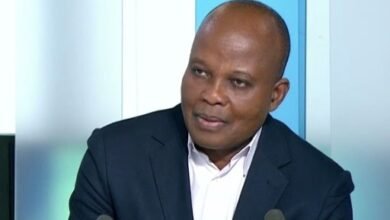Cart’Afrik : African Education Model
This analysis and study will serve as a recommendation to improve the African educational model in view of the emergence planned for 2063. Indeed, by 2063, according to the African Union, Africa will have more than 2 billion inhabitants, i.e. 25% of the world's population, half of which will be young people. In this sense, a traditional education system will not be able to absorb such a critical mass of young students.
By Cédric Yamdjeu*
In order to overcome this problem, it is important that the continent invents its own model, drawing inspiration from the Asian dragons, including South Korea. This recommendation will be made in three stages: the explanation of the South Korean education model, the current impact of education and in general of human capital on the South Korean economy, the creation of an African model inspired by the latter, taking into account the context of the continent.
1) Explanation of the South Korean education model
The South Korean school system is a system characterised by five levels: primary school, junior high school, high school, technical school and higher education as illustrated in the table below:

According to the CIA World Factbook, the literacy rate of the population over 15 years of age in the Land of the Morning Calm was around 97.9% in 2012 (more precisely almost 99.2% for males and 96.6% for females).
The HAGWON system
The South Korean system is characterised by the presence of hagwons, expensive public schools attended by almost all the country’s schoolchildren. The latter are characterised by tutoring courses with a time slot of 6 pm to 10 pm. From primary school to high school, young South Koreans have an immense intellectual workload in order to prepare for the suneung, the exam that determines the entrance of students to university (equivalent to the national BAC).
In 2013, South Korean households invested nearly eighteen billion dollars in private education, a unique figure for a country of fifty million inhabitants.
The extraordinary academic results of this ‘educational Marshall Plan’ were soon felt, as in terms of education, South Korea holds an excellent ranking on a global scale.
In 2013, the OECD’s PISA (Programme for International Student Assessment), which certifies the achievement of secondary school students in 60 countries around the world, ranked South Korea in the top five in mathematics and reading.
2) Current impact of education on the South Korean economy
South Korea is now the 15th largest economy in the world with a gross domestic product of approximately $1538 billion in 2017, with a GDP per capita of $39,400, more than Spain and Italy and almost as much as France and Japan. In this section we will highlight the human capital and education that are behind the current economic position of the land of the morning calm.
Like Japan, South Korea is characterised by its lack of natural resources and as a result has relied on human capital, education of its population, accumulation of knowledge and know-how as stated by the economist Schultz to become one of the world’s largest economies today.
According to Lee Jong-Won, human capital remained the decisive vector of Korean economic growth for three decades, between 1960 and 1990. This is one of the fundamental reasons why South Korea is ahead of other emerging economies such as Hong Kong, Singapore and Taiwan.
In addition, the growth factors of secondary school enrolment and the decline in out-of-school youth, especially among girls, have solidified South Korea’s lead over the other Asian dragons
.

Another factor that prompts us to emphasise the role of human capital in Korean economic development is the country’s record in innovation and research and development. According to Thomson Reuters, in 2012 South Korea was the fourth most innovative country in the world, behind the United States, Japan and France and ahead of Sweden, Switzerland, Belgium and Germany.
3) Creating an educational model: African Lion Education
Before proposing a resolutely pan-African educational model turned towards the world, this part will highlight the state of play of teaching and education in Africa.
The continent already has a population of 600 million young people, i.e. half of the African population, and will have twice that number in 2060, i.e. almost 1 billion young people, i.e. as many children who will need to be educated. However, according to the UIS (UNESCO Institute for Statistics), nearly 20% of children aged 6 to 11 are not in school and nearly a third of young people aged 12 to 14 are not in school either. Moreover, only 7% of the same age group have access to higher education, compared to 80% in developed countries.
Nevertheless, education is advancing at an excellent pace on the continent, with 80% of young Africans having access to primary school compared to 64% in 2000 and 25% of children entering secondary school compared to 3% ten years ago. Finally, there are deep divergences on the issue in Africa. First of all, there are gender differences: girls are in school half as long as boys. Secondly, the brain drain (professors and students) contributes to the deterioration of higher education and will not be able to absorb the critical mass of students. Finally, the mismatch between education and employment needs shows that more professional training should be emphasised.
Our recommendation, inspired by the Asian dragons, will cover both teaching and education, in the public and private sectors, and is intended to be cross-cutting (from primary through secondary to university).
At the level of public expenditure, there is an inequality in national budgets dedicated to education depending on the country. For example, Nigeria devotes only 7% of its budget to the education of its population, whereas in Côte d’Ivoire and Senegal it is 25%. By way of comparison, South Korea has been devoting between 20 and 25% of its national budget since 1999. We therefore recommend that all African administrations dedicate about 25% of their budget to the education of their population.
Primary and secondary schools are the foundations of a successful education, given the age of pupils from 3 to 18 years. They are also the preparation and entry to higher or university education. Primary and secondary education should be delivered on the liberal arts model, largely based on exchange, project development, entrepreneurship training (in the form of micro-projects, games).
To transform education in Africa, it is necessary that instruction be based on fundamental subjects with certain complements:
scientific: mathematics, physics, technology, accounting, economics…
literary: for French-speaking countries, the objective is to converge towards bilingualism or even trilingualism (teaching of French, English, a local language ideally recognised as an official language such as Swahili in Rwanda, supplemented by learning Mandarin)
cultural: history and knowledge of geography are of great importance in the life of a nation, « one cannot know where one is going if one does not know where one comes from ». It is imperative to complement the history education of our children with books written by our pan-African authors and or with books such as the UNESCO General History of Africa in several themes.
A system of « pan-African » preparatory classes inspired by the South Korean Hagwon should be set up in the first instance at the level of secondary schools, which would essentially offer support courses and/or individual or group revision with time slots from 6pm to 9pm on weekdays and from 8.30am to 12pm on Saturdays. The Libermann College in Cameroon is a perfect illustration of this system.
The aim of these recommendations is to set up an « International African Baccalaureate » to reinforce the current system: in French-speaking Africa, the General Baccalaureate (series C, D, A, B, TI), the Technical Baccalaureate (F4, F3…) in the Anglo-Saxon system, the Cambridge International AS & A Levels. The students of this baccalaureate will have the opportunity to do internships of a few weeks to 3 months in a company, NGO or public body as do the students of the Pan African ENKO Education group.
The African university par excellence will build on the current ADU (African Development University) or ALU (African Leadership University) models that put ethical leadership at the centre of their teaching and train Africa’s most talented young people to rebuild their continent as future decision-makers in the private and public sector.
Finally, digital technology has a fundamental role to play in the education of Africa’s youth. It is clear that with a youth population of over 1 billion and despite possible investments in school infrastructure, it would be extremely difficult to educate all of these youth through conventional methods. Digital inclusion is undoubtedly the key to the problem, especially with 660 million people connected to a smartphone. We must therefore encourage programmes such as those of the African Virtual University (AVU) in partnership with the AfDB (African Development Bank) which offer Distance e-learning centres. The rise of m-learning with applications such as Reimagine SA, a platform that advocates for the promotion of distance education in African universities is also to be welcomed.
*Cédric Yamdjeu, digital expert is Founder of 50 Afrique.
Read also: https://www.afrikatech.com/fr/education/etat-des-lieux-du-secteur-education-en-afrique-en-2017/
Sources :
Éducation en Corée du Sud, un modèle de réussite ?
Human capital: a key factor in the Korean development model Rang-Ri Park-Barjot, Jmmyn Parc1






